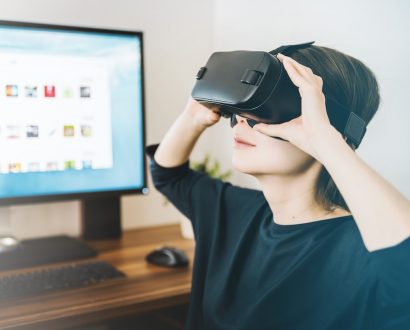How companies are using virtual reality to boost business

Virtual reality was once considered something that only existed in sci-fi books and movies. But in a relatively short period of time, the technology has gained steam and quickly improved in both quality and capabilities.
Companies are using the technology to not only give them a point of difference, but to also boost their business appeal as innovators and win over new customers.
One such company is Audi, which launched VR technology into dealerships in August 2017 to give customers a realistic experience of a car that had been individually configured into their dream vehicle.
The technology allows users to choose from several hundred million options and experience the car in 3D from 360 degrees, including light and sound effects at different times of the day to better simulate real life.
"With the VR experience we have developed a full-fledged sales tool for Audi dealers. It offers our customers more information and certainty when making their purchasing decision, as well as a special excitement factor," said Nils Wollny, Head of Digital Business Strategy/Customer Experience at AUDI AG, at the time.
In January this year, the company took its VR vision to the next level with the launch of holoride, which allows backseat passengers to put on a headset and immerse themselves in a fantasy world. Everything the user sees on the headset is a reflection of the real-life driving – location, speed, acceleration and braking – to make the experience even more realistic, except for the setting.
In the retail space, as competition has heated up for online shoppers, companies such as ecommerce one step further such as Ikea with its Virtual Reality Store, which allows customers to see, experience and buy the company’s products as if they were walking around an actual store.
This feature is particularly handy for those who live in regional or rural areas or customers who get hit by the shopping bug at 3am and can’t wait until a store opens.
"Virtual reality is developing quickly and in five to 10 years it will be an integrated part of people’s lives. We see that it will play a major role in the future. For instance, it could be used to enable people to try out a variety of home furnishing solutions before buying them," Jesper Brodin, IKEA global CEO, has said.
Publishing companies have also jumped on the VR bandwagon, with The New York Times releasing an app in November 2015 that allows users to immerse themselves in the world journalists are reporting on, from standing alongside military forces in Iraq to going into a studio with a band.
The media company has elevated its VR appeal through the production of several VR films, including its first release The Displaced, which explores the global refugee crisis through the eyes of three children.
"VR is great for creating a sense of place. We often use it for stories in which the place is important to the story and being there can create a visceral experience that is rare in other mediums. VR can transport our audience to places they otherwise couldn’t or wouldn’t go," said Marcelle Hopkins, then deputy video editor and co-director of virtual reality at The New York Times, in an interview.
It is this transportation to another world that has so many people hooked on the technology. And it seems here to stay – Telsyte says the Australian VR headset market grew 40% in 2017, forecasting that 2.2 million households will have a headset by 2021.
Meanwhile, International Data Corporation says the combined augmented reality/virtual reality headset market rose 9.4% year over year in the third quarter of 2018.
As its influence in our lives grows, so too will how it is used – and its potential really is limitless. As VR pioneer Chris Milk, CEO and Co-Founder of Within, in a 2015 Ted Talk: "It connects humans to other humans in a profound way that I’ve never seen before in any other form of media. And it can change people’s perception of each other. And that’s how I think virtual reality has the potential to actually change the world."